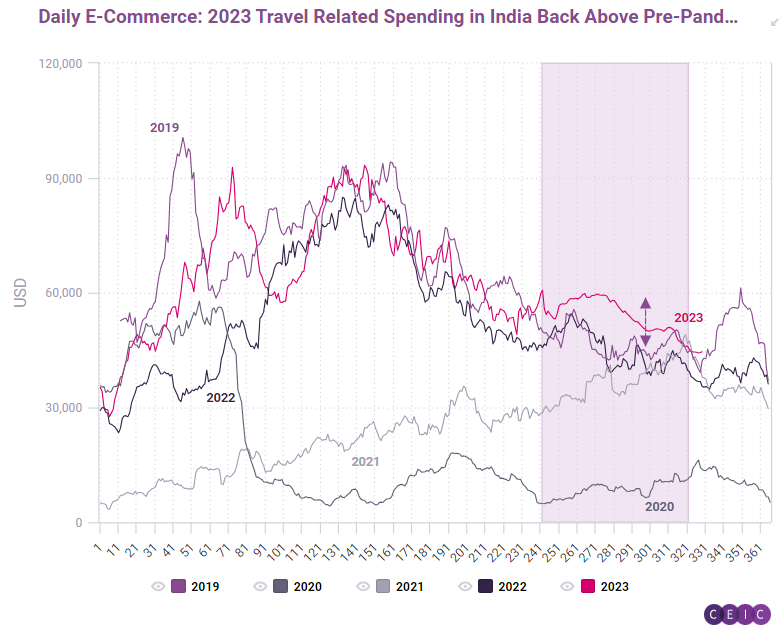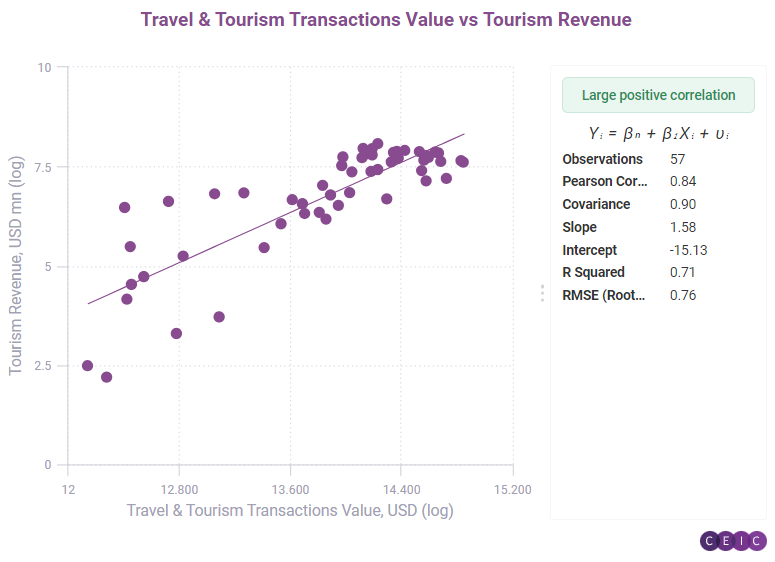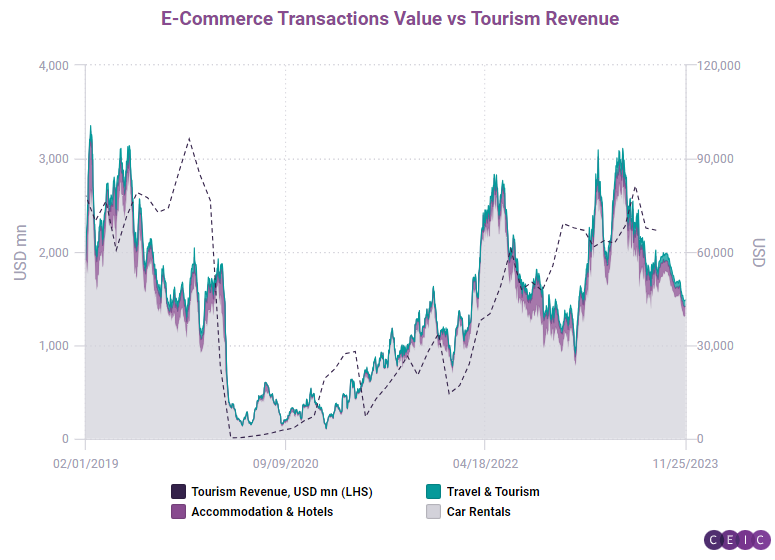
India's tourism sector is poised for robust growth, particularly evident since early September, with daily e-commerce transactions on tourist-related goods and services surpassing levels from the past four years. The daily value stood between USD 54,000 and USD 60,000 since early September, whereas during the same period in 2019, the figures ranged between USD 45,000 and USD 55,000. The recent positive trend in the data, sourced from Grips, a global provider of e-commerce data, and available within CEIC, indicates a noteworthy improvement, surpassing its pre-pandemic values and signaling further increases in tourism revenue for India.

While official tourism revenue data from India's Ministry of Tourism comes with a substantial lag of more than one month, the historical track record of daily transaction data, spanning over five years, highlights a strong correlation between daily e-commerce transactions and India's tourism revenue. This correlation underscores the reliability of daily e-commerce data as a leading indicator, showcasing its ability to precede peaks and troughs in the tourism revenue dynamic.

India's tourism sector holds substantial economic weight, with the gross value added (GVA) of hotels, transport, trade, and communication accounting for 17% of the total GVA in Q2 2023. Furthermore, foreign tourist arrivals result in substantial income from foreign exchange earnings. Employment is another important segment that benefits from tourism, but it remains predominantly informal despite formal sector jobs witnessing steady growth. Tourism revenue, while indeed recovering consistently, is yet to reach the pre-pandemic all-time high at USD 3.2bn in January compared to USD 2.7bn in July 2023.

Recognizing the sector's importance, having an early estimate of tourism revenue through daily e-commerce data becomes instrumental in evaluating broader economic developments. Moreover, the significance of daily e-commerce data extends beyond the tourism sector, serving as a valuable alternative indicator for India due to the absence of traditional retail sales indicators.
The CEIC Global Database provides access to a vast database where users can gain insight into the ever-changing dynamics of world economies.
.png?width=160&name=ceic-logo-Vector%20logo%20no%20tagline%20(002).png)
